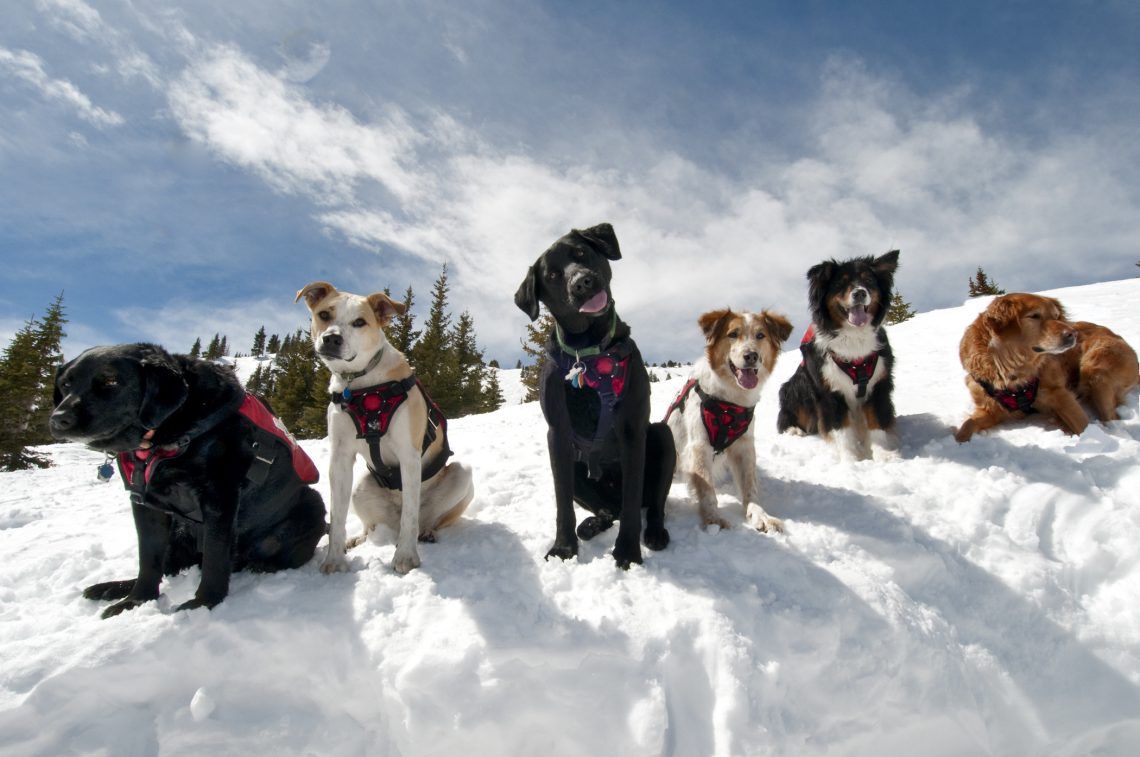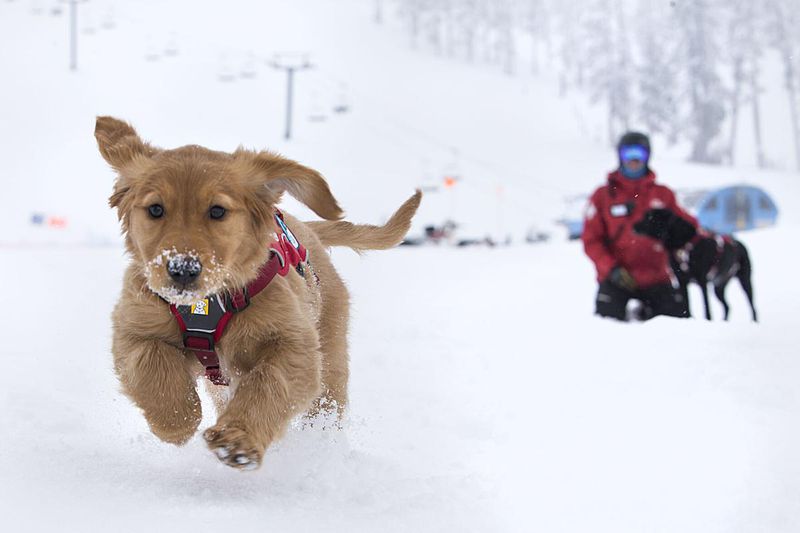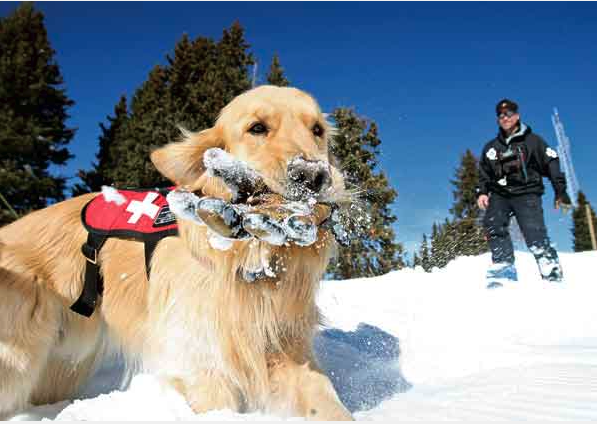Snow patrol dogs are essential for keeping people safe in snowy areas. These furry experts have great talents like navigating tricky terrain and finding people during avalanches. They have a sharp sense of smell and agility, making them invaluable for search and rescue missions. Plus, they bring comfort in these emergencies. Humans and snow patrol dogs work together showing the strength of teamwork.

These dogs must be prepared for the snow. They learn how to handle extreme weather, like cold, high altitudes, and winds. They wear protective gear, like boots and goggles, to keep them safe from frostbite and other injuries. This makes sure they can do their job in difficult times.
The best part about snow patrol dogs is their ability to smell scents buried under snow. They can even detect the faintest human scent, helping them find victims in avalanches. They are taught to differentiate between smells, making their work more successful. This level of training helps boost survival rates in snow-related crises.
Remember, when you see a snow patrol dog during a rescue, stay calm and obey their orders. These animals are lifesavers, so respecting them helps everyone out.
The role of snow patrol dogs
To understand the role of snow patrol dogs in aiding rescues and security, delve into the history of these remarkable animals and their extensive training. The sub-sections will explore the historical background of snow patrol dogs and the rigorous training methods they undergo to become indispensable members of rescue teams.
History of snow patrol dogs
Snow patrol dogs have been key to snowy regions for centuries. Highly trained, they have remarkable skills like avalanche rescue and tracking lost people in tough conditions. They've been around since ancient times, when people first saw their value.
Snow patrol dogs have a long history, helping communities living in snow. With sensitive noses and agility, shepherds used them to guard livestock in mountains. As time went on, they adapted their skills for us humans: like guiding travelers in snowy areas and helping search and rescue teams.
These dogs get special training. Obedience, scent detection and even heli-skiing! This means they can find people buried under snow or trapped in avalanches. They can also navigate tough terrains with ease.
Snow patrol dogs are essential for sudden snowstorms and avalanches. Often, they reach victims quicker than human rescuers. So they can mean the difference between life and death.
Seeing a snow patrol dog dig through deep snow or brave blizzards makes us appreciate their dedication. Their presence brings hope and reminds us to cherish animals. Let us honor their legacy and support their training and welfare.

Training of snow patrol dogs
Building a strong foundation is key when training snow patrol dogs. This includes teaching them to sit, stay, come when called, and walk on a leash. Exposure to different terrains and weather conditions is also necessary. This may include training exercises on snow surfaces, icy slopes, and blizzard-like conditions.

Scent detection training is important too. These dogs are trained to sniff out human scents beneath layers of snow or avalanches. Agility training is another key component. This involves obstacle courses to simulate real-life scenarios, such as climbing over snowdrifts or navigating through forests.
Helicopter winch training is necessary for rescues in snowy areas. This prepares the dogs for the loud noises and movements of helicopters. Mock rescue missions are also conducted. These provide an opportunity to evaluate the dog's skills and ability to perform under pressure.
Real-world experience is crucial for honing their abilities. Max is a great example of this - he found a stranded skier in a heavy snowstorm with his scent detection skills!
To summarize, training snow patrol dogs is a complex process. It includes obedience commands, exposure to challenging environments, agility training, scent detection exercises, and mock rescue missions. With this, they become invaluable assets in search and rescue operations in snowy regions!
Breeds commonly used as snow patrol dogs
To better understand the breeds commonly used as snow patrol dogs, dive into their characteristics and traits, as well as explore the popular snow patrol dog breeds. Discover the unique qualities that make these dogs well-suited for snowy climates and their important roles in search and rescue missions.
Characteristics and traits of snow patrol dog breeds
Snow patrol dog breeds have unique characteristics, making them perfect for snowy areas. They are strong, enduring and smart. Plus, they have impressive qualities such as thick double-coats that guard against frostbite and webbed paws that deliver stability on icy surfaces.
In 1930, a heroic Saint Bernard named Barry saved the lives of 40 people in a Swiss Alpine storm. This amazing act solidified the Saint Bernards as reliable snow patrol dogs.
Popular snow patrol dog breeds
Snow patrol dog breeds are a key asset for snowy regions. Trained to handle treacherous terrain and extreme weather, they possess unique skills and physical attributes. Such breeds include:
- The Alaskan Malamute - strong and enduring, their dense coat provides a warm protection.
- The Siberian Husky - its thick double coat making it suitable for below-freezing temperatures.
- The Saint Bernard - from the Swiss Alps, well-known for its direction-sense and strength. It can locate people beneath thick layers of snow.
- The Bernese Mountain Dog - has a strong build and double-layered coat, making it an ideal snow patrol breed.

Not only are they proficient workers, but there is a special bond between Alaskan Malamutes and humans. They were historically bred by the Inuit people as sled dogs and companions. Saint Bernards are remarkable too - National Geographic reports that they can detect human scents even beneath feet of snow! This impressive talent makes them the perfect choice for rescue missions.
Duties and responsibilities of snow patrol dogs
Snow patrol dogs are a vital part of protecting snowy areas. Their tasks are tough and demand their sharp senses and special training.
- 1. Snow patrol dogs are taught to aid in search and rescue operations, utilizing their powerful noses to detect missing persons or avalanche casualties.
- 2. They assist ski patrols by inspecting slopes for any signs of danger or probable avalanches.
- 3. These courageous canines are trained to spot concealed dangers lying beneath the snow, such as crevasses or unsteady surfaces.
- They also search for lost equipment or items in the immense snowy spaces.
- In intense weather conditions, they help stranded hikers or skiers by guiding them back to safety.
- In addition, snow patrol dogs support in sniffing out illegal substances or contraband during security checks at ski resorts.
Furthermore, these incredible animals take part in laborious training sessions to raise their agility and stamina. They work closely with their handlers, creating an unbreakable bond based on faith and interdependence.
Fun fact: Snow patrol dogs have been sent to many places around the world. Switzerland's Swiss Alpine Club was one of the earliest organizations to recognize the importance of these highly trained pooches in mountain rescue operations.

Benefits of using snow patrol dogs in snowy environments
Snow patrol dogs provide invaluable benefits for safety and efficiency in snowy environments. These loyal, trained canines possess special skills that are effective for patrolling such terrains. Benefits include:
- Enhanced search and rescue capabilities - their sense of smell, agility, and endurance make them helpful during missions.
- Efficient avalanche detection - they detect signs early and protect lives/property.
- Improved tracking abilities - they follow trails left by people/animals.
- Effective deterrent against wildlife - keeps people safe from hazardous animals.
- Boosted team morale - comfort and uplift spirits.
These dogs undergo rigorous training, plus they're paired with experienced handlers. Snow patrol dog units have been deployed worldwide, from the Swiss Alps to the Arctic Circle. National Geographic reports they can identify human scent under 15 ft of snow!
Challenges faced by snow patrol dogs
Snow patrol dogs battle many difficulties in their work. They endure tough weather and traverse difficult terrain. Challenges include:
- Freezing temperatures, blizzards and strong winds.
- Covering long distances and deep snow.
- Searching for survivors under avalanches.
- Danger from wild animals.
- Mental strain from training and witnessing suffering.
These courageous animals persevere even with limited resources in remote locations.
During WWII, snow patrol dogs saved thousands of soldiers from Norway's Arctic. The incredible endurance of these hero dogs earned them a place in history.
Success stories of snow patrol dogs
Snow patrol dogs have made a huge success of saving lives and keeping people safe. They are vital in rescue operations, search missions, and avalanche control. Let's check out how incredible these dogs are!
- Heroic Rescues: These snow patrol dogs can locate and dig out people trapped under avalanches or lost in the snowy wilderness. Their smell and agility let them do this, making them very important.
- Trailblazer Trackers: Snow patrol dogs are trained to track scents in snow. This helps rescuers find missing persons quickly.
- Vital Communication: Snow patrol dogs can even communicate from far away. They bark or howl to tell rescuers if they've found a victim or a hazard.
- Deterrent Effect: The presence of snow patrol dogs helps keep rescue teams safe during avalanche control. They can navigate dangerous places quickly.
- Mental Health Support: Snow patrol dogs provide emotional support too. They offer companionship and help morale during tough missions.
These stories show what a big deal these dogs are. Their courage and skill make them an important part of any mission.
We need to see their abilities to understand how valuable they are. We should support and appreciate these amazing dogs. Let's recognize and celebrate them while giving them what they need. Together, we can make sure these success stories keep happening.

Conclusion
Snow patrol dogs are remarkable animals! They are trained to endure extreme weather and adapt to snowy regions. Their strong sense of smell helps them detect human scents even in deep snow. So, they prove invaluable during rescue missions.
They go through rigorous training programs. They learn obedience, search and rescue techniques, and avalanche awareness. This equips them with the skills needed to help save lives.
As an example of their heroic efforts, Balto led a team of sled dogs across Alaska in 1925. He delivered medicine during an outbreak of diphtheria, helping to save many lives.
In conclusion, these skilled pooches are key members of any search and rescue team in snowy regions. They are dedicated and have the abilities to keep us safe.

Frequently Asked Questions
Q: What are snow patrol dogs?
A: Snow patrol dogs are specially trained dogs that assist in rescue operations during snowstorms and avalanches.
Q: How do snow patrol dogs help during snowstorms?
A: Snow patrol dogs are trained to locate and rescue individuals who may be trapped or buried in the snow. They use their keen sense of smell and agility to navigate through treacherous conditions.
Q: What breeds of dogs are commonly used as snow patrol dogs?
A: Breeds commonly used as snow patrol dogs include Alaskan Malamutes, Bernese Mountain Dogs, Siberian Huskies, and Newfoundland dogs. These breeds possess the physical capabilities and temperament required for snowy rescues.
Q: How do snow patrol dogs stay safe during rescue operations?
A: Snow patrol dogs are equipped with protective gear such as insulated clothing, boots, and goggles to keep them safe from extreme cold and other weather elements. Their training also includes protocols to ensure their safety in hazardous conditions.
Q: How long does it take to train a snow patrol dog?
A: Training a snow patrol dog typically takes several months to a year. The training involves obedience, search and rescue techniques, agility training, and exposure to various winter conditions.
Q: Can anyone adopt a retired snow patrol dog?
A: In most cases, retired snow patrol dogs are available for adoption. However, potential adopters must meet specific criteria set by the rescue organization, which may include providing a suitable home environment, veterinary care, and ongoing support for the dog.




